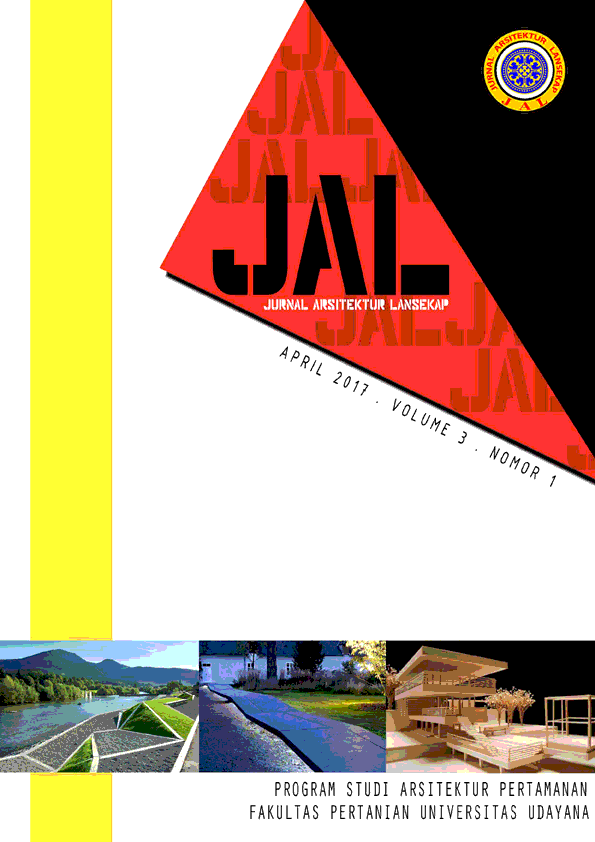Penempatan Tanaman Upakara sebagi Elemen Lunak Taman Pekarangan Rumah Ditinjau dari Aspek Filosofi Budaya Bali di Kecamatan Payangan, Kabupaten Gianyar, Provinsi Bali
Abstract
The Placement of Ritual Plants as Soft Elements of Garden Reviewed from Aspect of Balinese Culture Philosophy in District of Payangan, Gianyar Regency, Province of Bali
Hindus community in Bali always held a religious rituals throughout the year. Most of the ritual elements are descended from plants which are well known as “ritual plants”. Traditional garden of Bali should use ritual plants as a landscaping plant. Objectives of this research were to determine ritual plant as a soft elements of garden located in district of Payangan, Gianyar regency, province of Bali and to review the placement ritual plants from aspects of Balinese philosophy. Data were collected from three villages in Payangan throught field survey. Results showed that there were as many as 48 samples of house were surveyed with 80 species of ritual plants found as it used as elements of garden in district of Payangan. The placement of ritual plants were appropriate to the philosophy concepts of Balinese culture which were Tri Mandala and Asta Dala. Unfortunately, these concept were not implemented by the people in Payangan district because of the lack of knowledge.
Downloads
An author who publishes in the Jurnal Arsitektur Lansekap (JAL) agrees to the following terms:
- Author retains the copyright and grants the journal the right of first publication of the work simultaneously licensed under the Creative Commons Attribution-ShareAlike 4.0 License that allows others to share the work with an acknowledgement of the work's authorship and initial publication in this journal
- Author is able to enter into separate, additional contractual arrangements for the non-exclusive distribution of the journal's published version of the work (e.g., post it to an institutional repository or publish it in a book) with the acknowledgement of its initial publication in this journal.
- Author is permitted and encouraged to post his/her work online (e.g., in institutional repositories or on their website) prior to and during the submission process, as it can lead to productive exchanges, as well as earlier and greater citation of the published work (See The Effect of Open Access).
Read more about the Creative Commons Attribution-ShareAlike 4.0 Licence here: https://creativecommons.org/licenses/by-sa/4.0/.







